The Latest from Boing Boing |  |
- MAKERS tour ends this weekend at Philcon near Philadelphia
- Opium dens of 1889 San Francisco in photos
- Chumby One: handsome successor to the cutest computer ever
- EFF analyzes the legal creepiness of ACTA, the secret copyright treaty
- Unintentional Humor of the Day
- $50k novel advance == "almost qualify for foodstamps"
- Guns 'n Gardens - How to Survive the Zombie Apocalypse
- Video of artist Chris Piascik at work
- Maricopa deputy steals defender's paperwork during a court case
- SFPD cops from imaginary anti-dance-party squad steal laptops
- Replacing a switch on an electric shaver
- The Coming Apocalypse is Pretty Funny Actually
- Train track inspector almost gets hit twice
- IBM computer brain simulation as complex as a cat's
- Separating the Green from the Wash
- How-to make yourself look like Sailor Moon
- Hippos don't like croocdiles climbing over their backs
- Placenta treatment reportedly helped injured soccer players
- Police officer tasers a 10-year-girl who resisted being taken to a youth center
- Library workers fired for colluding to keep graphic novel from being checked out by 11-year old girl
- Energy Literacy part One: Energy is invisible
- Pfizer abandons property it won in Supreme Court housing battle
- Pre-orders open on Daily Edition reader
- New Catholic video game promises to brings family closer to heaven
- Exploded human skull in a bell-jar
- Papercraft mecha: Metabots
- What the $*@&#! is the Nephroid of Freeth?
- Space Invader war photography
- Jacques Vallee: Waterboarding's curious corollaries
- Jacques Vallee on Boing Boing
| MAKERS tour ends this weekend at Philcon near Philadelphia Posted: 19 Nov 2009 05:02 AM PST  This weekend, I'll be wrapping up my US/Canada tour for Makers, my new novel, with a weekend at Philcon, near Philadelphia. I'll be signing books, doing a reading, giving a speech, and appearing on several panels. Hope to see you there! This weekend, I'll be wrapping up my US/Canada tour for Makers, my new novel, with a weekend at Philcon, near Philadelphia. I'll be signing books, doing a reading, giving a speech, and appearing on several panels. Hope to see you there! Important note: I had previously announced a couple of readings tomorrow at the Philadelphia Free Library. It turns out that these are not open to the public (they're for school groups, which no one told me until last night). Sorry about this, folks. Philcon: Nov 20-22 |
| Opium dens of 1889 San Francisco in photos Posted: 19 Nov 2009 04:45 AM PST 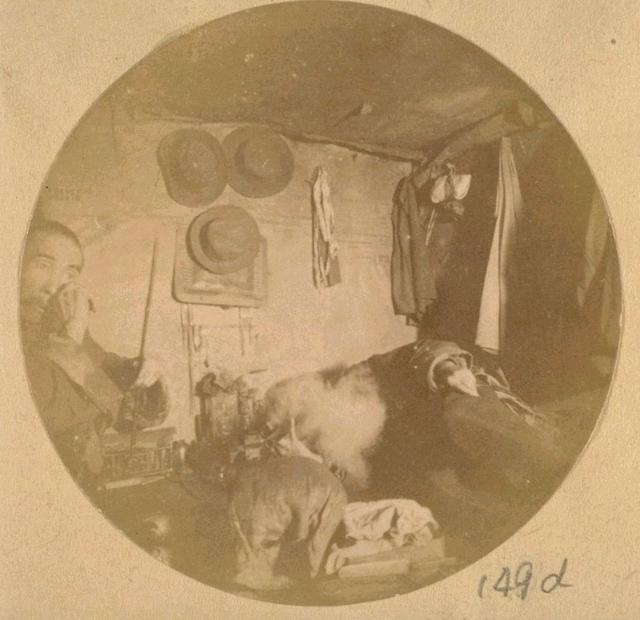 Jeff sends us these 1889 opium den photos, noting, "Unlike some guerrilla photogs of the era who would barge into dens with their new-fangled flash tech, snap a shot, and flee, these shots were taken by someone who had clearly established a connection with the users." San Francisco Opium Den Photos circa 1889 (Thanks, Jeff!) Previously: |
| Chumby One: handsome successor to the cutest computer ever Posted: 19 Nov 2009 05:02 AM PST  The Chumby One -- the successor to the incredibly innovative Chumby device -- is just about ready to ship, and is available for $99. Chumby is a cute, squeezable hand-held device that is wide open -- everything from the circuit board designs to the software is open-licensed and freely downloadable. The idea is to produce an adorable, versatile device that any hacker, anywhere, can improve, so that all Chumby owners can get more out of it. I have a couple of them at the office and I love playing with them. The new version looks amazing. In addition to being about half the price of the original chumby, the new device added some features: it has an FM radio, and it has support for a rechargeable lithium ion battery (although it's not included with the device, you have to buy one and install it yourself). There's also a knob so you can easily/quickly adjust the volume. But I don't think those are really the significant new features. What really gets me excited about this one is that it's much more hackable. The most significant improvement is that the firmware is stored on a microSD card.chumby One (Bunnie Huang's blog) Previously:
|
| EFF analyzes the legal creepiness of ACTA, the secret copyright treaty Posted: 19 Nov 2009 04:17 AM PST The Electronic Frontier Foundation's international policy crimefighting duo, Eddan Katz and Gwen Hinze, have published a scholarly article analyzing the secret Anti-Counterfeiting Trade Agreement in light of US law and policy. Called "The Impact of ACTA on the Knowledge Economy," it was recently published in the Yale Journal of International Law, and constitutes a fantastic, reference-heavy resource for understanding just how creepy it is that the Obama administration is sneaking around behind Congress's back (not to mention the backs of the American public) to create a privacy-invading, internet-breaking trade agreement that the US will be bound to bring into its law. In brief, the ACTA process has been deliberately more secretive than customary practices in international decision-making bodies to evade the debates about intellectual property (IP) at established multilateral institutions. The Office of the USTR has chosen to negotiate ACTA as a sole executive agreement. Because of a loophole in democratic accountability on sole executive agreements, the Office of the USTR can sign off on an IP Enforcement agenda without any formal congressional involvement at all. But the negotiations do not have to be secret, and the sole executive agreement process does have mechanisms for oversight: they have not been used in ACTA, but can and should be.Stopping the ACTA Juggernaut Previously:
|
| Unintentional Humor of the Day Posted: 18 Nov 2009 09:11 PM PST |
| $50k novel advance == "almost qualify for foodstamps" Posted: 18 Nov 2009 05:20 PM PST "If I published only one book a year, and it did as well as this one, my net would be only around $2500.00 over the income level considered to be the US poverty threshhold," writes a bestselling author. The math: $50k advance, half of it lost to agent and other costs, and even bestseller royalties don't immediately cover the advance to create a return. But ... what if one wrote two books in a year? |
| Guns 'n Gardens - How to Survive the Zombie Apocalypse Posted: 18 Nov 2009 04:45 PM PST This is a great idea -- a show about useful DIY skills, set in a zombie apocalypse context. It reminds me a bit of Max Brooks marvelously deadpan Zombie Survival Guide. |
| Video of artist Chris Piascik at work Posted: 18 Nov 2009 04:28 PM PST A lovely video of Chris Piascik at work. "Chris explains that these doodles start with him randomly scribbling out a loopy pattern and then filling it in." |
| Maricopa deputy steals defender's paperwork during a court case Posted: 18 Nov 2009 04:48 PM PST Tom sends us video of a Maricopa County Sheriff's Deputy named Adam Stoddard stealing a public defender's paperwork, during a court proceeding, in front of the court's security camera. Tom adds, "The local news clip is really worth seeing, if only for the reporter's incredulous lead-in: 'The Maricopa County Sheriff's office backing one of its deputies after he takes away a lawyer's paperwork in court.' If you live in Arizona you're subject to the daily outrage from Sheriff Joe Arpaio. It's a bit like Philadelphia during the Rizzo years." The deputy claims he wasn't stealing the paper, he was searching it for contraband. H's been found in contempt of court, and the judge has ordered him to apologize: MCSO officer who took lawyer's paperwork might go to jail (Thanks, Tom!) Update: Dan Gillmor points out that the Heat City blog has done great work on this, breaking the story. Previously: |
| SFPD cops from imaginary anti-dance-party squad steal laptops Posted: 18 Nov 2009 05:36 PM PST Autumn sez, "DJs at local underground parties have been losing their laptops to police raids - even when they're not DJing. They're being told that they'll lose their laptops - and often their livelihood - for an indefinite period of time, with no information on when or how to get their property back. The EFF has taken on the defense of several local DJs, but this is having a huge effect already on the local dance scene." Over the past six months, music fans who have been spinning records -- or even just attending friends' events -- claim their laptops, soundboards, and mixers have been taken by the cops in police raids. The busted gatherings include an illegal dance party, an artist fundraiser, and a private Halloween bash. While it's unclear whether the lack of official permits was enough reason to close down all these parties, the bigger question is why the police are seizing and holding private property that DJs and attendees use as valuable tools for making their art and living.S.F. cops may have gone too far in seizing DJ gear at underground parties (Thanks, Autumn!) |
| Replacing a switch on an electric shaver Posted: 18 Nov 2009 01:21 PM PST  The owner of this electric shaver with a faulty power switch taught it a lesson it won't forget. I think it's great that he fixed it instead of throwing it away and buying a new one. |
| The Coming Apocalypse is Pretty Funny Actually Posted: 18 Nov 2009 01:23 PM PST  Barring any major uptick in stupid, this will be the last time I poke the 2012 believers with a stick. I swear. (At least, until January 2013.) Besides, this is a slightly different take than the usual debunking. The Santa Fe Reporter (the paper) sent Santa Fe reporter (the person) Corey Pein into the heart of the End of the World Industrial Complex to capture a slice-of-life that is by turns frustrating, fascinating, depressing and hilarious.
And later,
My Oh Mayan! from the Santa Fe Reporter Previously: Image courtesy Flickr user schoschie, via CC |
| Train track inspector almost gets hit twice Posted: 18 Nov 2009 01:08 PM PST |
| IBM computer brain simulation as complex as a cat's Posted: 18 Nov 2009 04:28 PM PST  I recently posted about IBM's Big Blue supercomputer built to simulate a human brain. IBM now reports that they've used a supercomputer to simulate a brain that exceeds that of a cat's in complexity and scale, in near real-time. I, for one, welcome our new feline A.I. overlords. From the San Jose Mercury News:
"IBM announces advances toward a computer that works like a human brain" (San Jose Mercury News)
|
| Separating the Green from the Wash Posted: 18 Nov 2009 12:43 PM PST From $50 bamboo T-shirts to environmental coloring books handed out by petroleum companies, greenwashing continues to be high on my list of "Things That Make Me Want To Rip My Hair Out and Then Go Do Worse to the People Responsible." The worst part, of course, is that it's often not easy to know when your green is coming to you heavily laundered. ClimateCount is an organization that's trying to help on that front. They put together an annual scorecard of Fortune 500 companies that breaks down these firms' real record on the environment. Then they rate the company's commitment to environmental responsibility as Stuck, Starting, or Striding. Everything is separated out by sector, so you can easily find the companies you want to check up on. Granted, I'm not convinced that Airlines, as a category, are ever going to move much beyond Starting. But I'm also frankly impressed that any are even at that point. So, tradeoffs. Couple of major downsides. First, this list is by no means comprehensive. We're talking Fortune 500 here, so that won't help you if you don't do a lot of business with those companies to begin with. For instance, the Beer category is sadly limited to Anheuser-Busch, Molson Coors, and SAB Miller. And what a cold, sad world that would be. Second, this is all a little subjective. Proctor and Gamble may get a Striding rating, largely for setting up energy use reduction goals that produced some results, and that may make them more green than their competitors. But does that really make them a green company? Overall, I think this might be better for helping you figure out which companies are totally blowing smoke up your various orifices than it is at helping you know which companies are truly awesome. But even that is useful. ClimateCount 2009 Scorecard |
| How-to make yourself look like Sailor Moon Posted: 18 Nov 2009 12:59 PM PST |
| Hippos don't like croocdiles climbing over their backs Posted: 18 Nov 2009 12:36 PM PST Note to self: If I am reborn as a crocodile, I must remember never to run across the backs of hippos. |
| Placenta treatment reportedly helped injured soccer players Posted: 18 Nov 2009 12:33 PM PST Yesterday, I posted that injured soccer player Robin van Persie flew to Serbia for a "placenta oil massage" he hoped would heal him. Apparently, the placenta treatment worked, but the Telegraph reports that it may have been more invasive than a massage: "The injection of horse placenta on to the affected area is claimed to speed up the recovery process and, while it is not known whether (teammate Yossi) Benayoun and Riera have been subjected to that treatment, both have returned to Liverpool ahead of schedule with their rehabilitation." (Thanks, Carlo Longino!) |
| Police officer tasers a 10-year-girl who resisted being taken to a youth center Posted: 18 Nov 2009 12:09 PM PST |
| Library workers fired for colluding to keep graphic novel from being checked out by 11-year old girl Posted: 18 Nov 2009 02:19 PM PST  Two workers at a Lexington, Kentucky public library were fired after it was discovered that they had teamed up to keep a copy of Alan Moore's The League of Extraordinary Gentlemen: The Black Dossier out of circulation. According to the story, Sharon Cook, 57 and Barbara Boisvert, 62, basically colluded to keep the book out of circulation -- Cook, who had become disturbed by the book's imagery, checked it out for a year, meaning no one else could check it out. However, when an 11-year-old girl put it on hold, Cook was unable to continue her delaying tactic -- and Boisvert stepped in, removing the hold, and keeping the book out of circulation.Alan Moore, destroyer of library workers Technorati Tags: Comics |
| Energy Literacy part One: Energy is invisible Posted: 18 Nov 2009 11:09 AM PST Saul Griffith is an inventor and entrepreneur. He did his PhD at MIT in programmable matter, exploring the relationship between bits and atoms, or information and materials. Since leaving MIT, he has co-founded a number of technology companies including www.optiopia.com, www.squid-labs.com, www.instructables.com, www.potenco.com, and www.makanipower.com. You might have just driven home. When you filled your car with gasoline, most likely you didn't even see the fluid as it was pumped into your gas tank. Once home, you probably turned on some lights, some music, your computer, and maybe even heat, so you could read this web page. You can't see the power running through the electrical lines that lead to your light bulb, and you don't feel it, but you do enjoy the results. Our society has made energy invisible. This invisibility makes energy convenient to use -- and the modern age is arguably wonderful as a result -- but it also makes it easy to take it for granted. Here we try to make our appetite for energy visible. Climate change is a phenomenon we now recognize as one of the most important challenges to ever confront humanity. Like energy use, it is also mostly invisible to us, and in two important ways. Firstly, the enormous volumes of green-house gases -- carbon dioxide, methane, CFC's etc, are quite literally invisible to our naked eyes. Secondly, the changes in climate progress so slowly that they seem invisible amidst the hustle and bustle of our daily lives. Because these consequences accumulate over decades, generations, and centuries, it is easy to not see them as pressing and urgent. Here we try to make visible these complicated and largely invisible things. The global energy and climate conversation is about choices, both individual choices and collective choices. By choosing the amount and type of energy we consume, we are choosing the look and feel of our future. Everyone is involved in that choice. Don't be fooled: individual choices collectively have enormous effects. A large coal power plant has a power output of 1GW (GigaWatt) which is 1 billion (1 000 000 000) Watts. If 1 billion people reduced their power needs by just 1 watt ( About what is required to keep a compact fluorescent burning for just 1 hour a day), that's a coal fired power plant you don't need to build. This material tries to help you make those choices in a more informed manner. We also hope this material influences the governments, organizations and corporations who make the decisions about our energy future on a macro level. These posts are about energy, climate change, finite resources, and the future. Unfortunately, the creation of this material is implicated in the very climate change and energy challenges we wish to avoid. You chose to read this, which means you chose to use some energy. These posts are not "carbon free" or "carbon neutral". At the time of its publishing there was practically no way that it ever could have been. Nearly every choice you make involves energy and all those choices have implications for the environment. Two people wrote this stuff. We both ate food produced by modern industrial agriculture to power ourselves while writing. We used at least five computers at different times to do the calculations, write the words, and edit the layout. After we had done our work, editors and designers used computers to further refine the text and images. Each of those computers ran for many hours, consuming somewhere between 20 and 200 watts of power each as they did so. The computers themselves were made in factories in China and Japan with chips produced in the United States, and cases probably made from bauxite mined in Australia and processed in Argentina. If you print this out, the paper it is printed on was probably made from trees that were cut down in Canada. The chainsaws that cut the trees ran on two-stroke gasoline. The trees were lifted onto a truck with a crane powered by diesel fuel. The truck drove the trees to the sawmill using diesel. Before the trees from which these pages were made had even been pulped, three internal combustion engines had been fired up, burned a fossil fuel and emitted some carbon dioxide. How much CO2? Not a lot. But all the little pieces add up. If you are just reading this on the web, there are disks and processors in data centers in numerous places running from coal plants, gas plants, even hydro and solar plants where the production of the cement and silicon was itself done using fossil fuels. The point is, it's a really complex system. As these paragraphs show, the global supply chain for energy is complex. This was in small part inspired by the pamphlet "I, Pencil - My Family Tree as told to Leonard E. Read." (1958). A piece that highlights just how interconnected our modern world is.
Each day the average American sets out with: OIL = 10.81 L/Person/day (2.9Gallons) COAL = 9.54 kg/person/day (21 pounds) NATURAL GAS = 5.88 m^3/person/day (208 cubic feet) Which roughly converted to those other units is around 22 Pints of oil per day (one per hour!), 21 pounds of coal (another per hour) and 200 cubic feet of natural gas. I used the annual consumption of coal and natural gas, and the daily consumption of oil, and converted it to the daily average by dividing it out by the population of the US. The data is here. |
| Pfizer abandons property it won in Supreme Court housing battle Posted: 18 Nov 2009 11:29 AM PST Last week Pfizer said it was shutting down its center. This Democracy Now video has interviews with a former homeowner and a lawyer who represented the homeowners who wanted to keep their homes. From Seth Roberts' Blog: One of the last things Jane Jacobs wrote was a friend-of-the-court letter in the Supreme Court case Kelo v. New London where eminent domain was used to take property from private landowners and give it to a private corporation (Pfizer). It was just as outrageous as that sounds. And Pfizer got away with it. Pfizer, After Having Its Way with the Good Citizens of New London ... ) |
| Pre-orders open on Daily Edition reader Posted: 18 Nov 2009 10:33 AM PST Sony's begun taking pre-orders for its new flagship "Daily Edition" reader (Think Kindle DX with less bitter DRM magic beans) for delivery next month. B&N Nook pre-orders are live, too. |
| New Catholic video game promises to brings family closer to heaven Posted: 18 Nov 2009 10:22 AM PST A new video game called Mass: We Pray brings new family fun to those who can't wait until Sunday to go to church. It has a cross-shaped motion-sensing controller reminiscent of a Wiimote, and you can collect "grace points" in order to unlock holy mysteries. The release date is slated for Spring 2010, but it's available for pre-order now. Mass: We Pray main page via The Raw Feed |
| Exploded human skull in a bell-jar Posted: 18 Nov 2009 09:56 AM PST |
| Posted: 18 Nov 2009 09:49 AM PST  EnjoyMobil's Metabots are incredibly detailed poseable papercraft mecha robots that you assemble (and then decorate) from $10 kit books. Man, I can't wait until my kid's old enough to build these with. Previously:
|
| What the $*@&#! is the Nephroid of Freeth? Posted: 18 Nov 2009 10:06 AM PST  I'll give you a hint: It has absolutely nothing to do with Star Trek, Star Wars or Dr. Who. (To my knowledge. Fanboy schooling commences anon.) More commonly called Freeth's Nephroid (which makes it sound less like a tentacled devourer of souls and more like a little boy's pet monster), it's actually a special plane curve--which is also not as weird and confusing as it sounds. Yeah, we're talkin' about a math thing today. (This was always my "B" subject, so feel free to let me know if I'm being wrong on the Internet. Again, fanboy schooling commences anon.) Onward to knowledge... Pictured: Not the Nephroid of Freeth. Courtesy Flickr user cole24, via CC Plane curves are really just curved shapes that exist in a two-dimensional, as opposed to three-dimensional, space. Think circle vs. sphere. "Special" plane curves are the ones that turned out to be interesting enough that mathematicians gave them their own name. Our friend the circle is a special plane curve. Ditto the parabola (aka, the curve that's kind of shaped like a boob). And, because this is math and they just like to mess with you by making "curve" not mean what you think it means, so is the line. Yeah, the "line" is really a specific thing that the general public uses as a generic term. Like kleenex. But back to the Nephroid of Freeth. Now we know what this thing is, in general. But why is it interesting? And what's with the name? For my own sake, I'm starting with the easy question. Nephroids are special plane curves that are shaped sort of like kidneys. (Not has fun of an analogy as the parabola, but hey, I didn't make this one up.) They often have the appearance of something produced by a bunch of mathematicians playing with a Spiro-graph. Technically, though, the shape has to do with with the way rays of light reflect off a semicircle. The classic example is the pattern of shadows that you see at the bottom of a coffee cup when it's set out in the sun. Light reflects off the semicircular sides of the cup and you see nephroids on the bottom. Freeth is a dude. Rather, was. Specifically, one T.J. Freeth, an English mathematician who died in 1904. He was pretty into strophoids, plane curves that are shaped like "a belt with a twist." They are all fancy like that. Strophoids are curves, but they're also things that happen to curves. Plane curves that get their panties in a bunch, if you will. So that image above is the strophoid of a line. Freeth's Nephroid, on the other hand, is the strophoid of a circle. See how that works? Yes, of course you do. But you're still wondering why you care. On a practical level, I'm told that you can use the Nephroid of Freeth as a jumping off point to drawing seven-, 21-, 35-, etc.-sided shapes inside a circle. Which is great, the next time you need to do that. However, astronomer David Darling has a more practical suggestion, writing that the Nephroid of Freeth "has been described as the perfect shape for a multi-seat dining table." I'm assuming he means the kidney shape with the strophoids becoming a cutout on one side, in which case, I'd be inclined to agree. It's also the name of a pub quiz team made up mostly of mathematicians from the University of London. Nephroid coffee image fair use via University of Minnesota Geometry Center. |
| Posted: 18 Nov 2009 09:14 AM PST  For his latest project, British art director Adam Richardson used Photoshop to superimpose Space Invader characters onto pics he took in Afghanistan and Iraq. Adam Richardson main page via NotCot For his latest project, British art director Adam Richardson used Photoshop to superimpose Space Invader characters onto pics he took in Afghanistan and Iraq. Adam Richardson main page via NotCot |
| Jacques Vallee: Waterboarding's curious corollaries Posted: 18 Nov 2009 12:24 PM PST Jacques Vallee is a computer scientist, partner in a venture capital firm, and author of more than 20 books, including Passport to Magonia: From Folklore to Flying Saucers, The Invisible College, and The Network Revolution. My friend, French Résistance leader Jacques Bergier, who was tortured multiple times by the Gestapo, made the ludicrous "confession" that his network planned to invade Corsica. In reality they were looking for heavy water and for Werner von Braun's rocket base. As a child of World War Two who remembers its limitless horrors, my revulsion at the practices of Guantanamo and Abu Ghraib was so great that it took me a while to realize the more positive implications: if our henchmen used waterboarding, a practice so primitive it placed us in the same hateful historical imagery as the caves of the Inquisition and the cellars of the Nazi, this can only mean that all the fancy interrogation drugs developed in classified labs in the 60s and 70s have failed: there is no truth serum. We should be relieved about that.
Evidently the scheme hasn't quite worked out as predicted: If we could simply slip a little green pill to the bad guys to find out their plans, we wouldn't have to resort to messy medieval practices that don't work. So let's go back to the legal methods of interrogation recommended by the professionals. And let's thank waterboarding for the realization that our intimate thoughts, prayers and dreams, flaky though they may be, will remain safe from chemical violation a little while longer. |
| Posted: 18 Nov 2009 03:44 PM PST 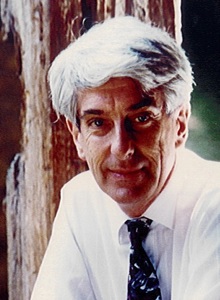 I'm delighted to introduce a new occasional guest blogger on Boing Boing, Dr. Jacques Vallee, who will contribute posts every so often. In the world of computer science, Jacques is best known for his pioneering database research in the 1960s at Stanford Research Institute and then, during the next decade, for leading the development of the the world's first network-based computer conferencing system for the ARPANET. He launched that project, called PLANET, in 1972 at Institute for the Future (IFTF), the non-profit thinktank where I'm a researcher. At IFTF, Jacques and his colleagues studied the social impact of online communication and explored its applications in industry. In 1976, Jacques founded InfoMedia, the first computer conferencing and groupware company. I met Jacques in person several years ago when he popped into IFTF for a visit. It was quite exciting for me as I was quite familiar with his work, albeit in a very, very different context. I'm delighted to introduce a new occasional guest blogger on Boing Boing, Dr. Jacques Vallee, who will contribute posts every so often. In the world of computer science, Jacques is best known for his pioneering database research in the 1960s at Stanford Research Institute and then, during the next decade, for leading the development of the the world's first network-based computer conferencing system for the ARPANET. He launched that project, called PLANET, in 1972 at Institute for the Future (IFTF), the non-profit thinktank where I'm a researcher. At IFTF, Jacques and his colleagues studied the social impact of online communication and explored its applications in industry. In 1976, Jacques founded InfoMedia, the first computer conferencing and groupware company. I met Jacques in person several years ago when he popped into IFTF for a visit. It was quite exciting for me as I was quite familiar with his work, albeit in a very, very different context. Recently, Jacques published the second volume of his personal journals, titled Forbidden Science, and is now completing a new book about ancient UFO sightings. He also works as a partner in a venture capital firm investing in emerging technologies with potential space applications. Jacques's intellectual rigor around anomalous phenomena and weird science has inspired me since I was a teenager. I'm thrilled to have his voice on Boing Boing. |
| You are subscribed to email updates from Boing Boing To stop receiving these emails, you may unsubscribe now. | Email delivery powered by Google |
| Google Inc., 20 West Kinzie, Chicago IL USA 60610 | |

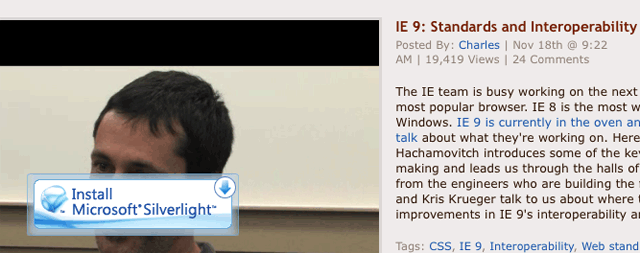

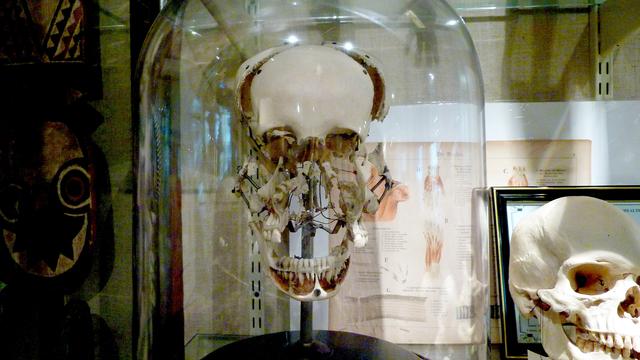


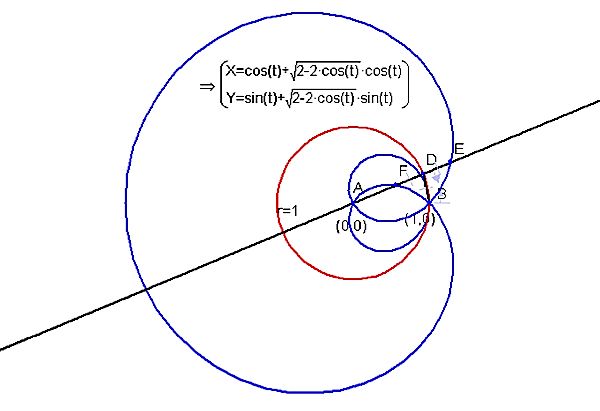
 When it was revealed that the U.S. resorted to torture to extract information from prisoners, many people my age must have had a very somber thought for the thousands of young Americans who had given their lives on the beaches of Normandy in a brave effort to rid the world of governments that engaged in such shameful practices. Two other thoughts flashed to mind: the stupidity of giving up the high moral ground at a time when the U.S. had earned so much goodwill thanks to its stand on democracy and human rights; and the pointlessness of such interrogations, often stated by our military experts, since the victims will generally admit to anything in order to stop the pain.
When it was revealed that the U.S. resorted to torture to extract information from prisoners, many people my age must have had a very somber thought for the thousands of young Americans who had given their lives on the beaches of Normandy in a brave effort to rid the world of governments that engaged in such shameful practices. Two other thoughts flashed to mind: the stupidity of giving up the high moral ground at a time when the U.S. had earned so much goodwill thanks to its stand on democracy and human rights; and the pointlessness of such interrogations, often stated by our military experts, since the victims will generally admit to anything in order to stop the pain.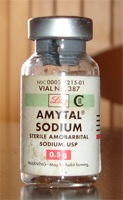
 For nearly fifty years, Jacques has studied the history and culture of the UFO phenomena and written a slew of fantastic books on the subject, always calling for a scientific investigation of reports rather than an approach rooted in belief. Among ufologists, Jacques is very much a "heretic among heretics" for opposing the typical opinion that UFOs are nuts-and-bolts spaceships piloted by extraterrestrials. Jacques once said, "I'll be disappointed if (UFOs) turn out to be only spacecraft from outer space." Whenever I see the movie Close Encounters of the Third Kind, I get a kick out of François Truffaut's character Claude Lacombe insisting that the UFO phenomenon "is an event sociologique!" That is exactly something Jacques would say, and indeed Steven Spielberg based the character on him. My favorites of Jacques' books are
For nearly fifty years, Jacques has studied the history and culture of the UFO phenomena and written a slew of fantastic books on the subject, always calling for a scientific investigation of reports rather than an approach rooted in belief. Among ufologists, Jacques is very much a "heretic among heretics" for opposing the typical opinion that UFOs are nuts-and-bolts spaceships piloted by extraterrestrials. Jacques once said, "I'll be disappointed if (UFOs) turn out to be only spacecraft from outer space." Whenever I see the movie Close Encounters of the Third Kind, I get a kick out of François Truffaut's character Claude Lacombe insisting that the UFO phenomenon "is an event sociologique!" That is exactly something Jacques would say, and indeed Steven Spielberg based the character on him. My favorites of Jacques' books are
No comments:
Post a Comment